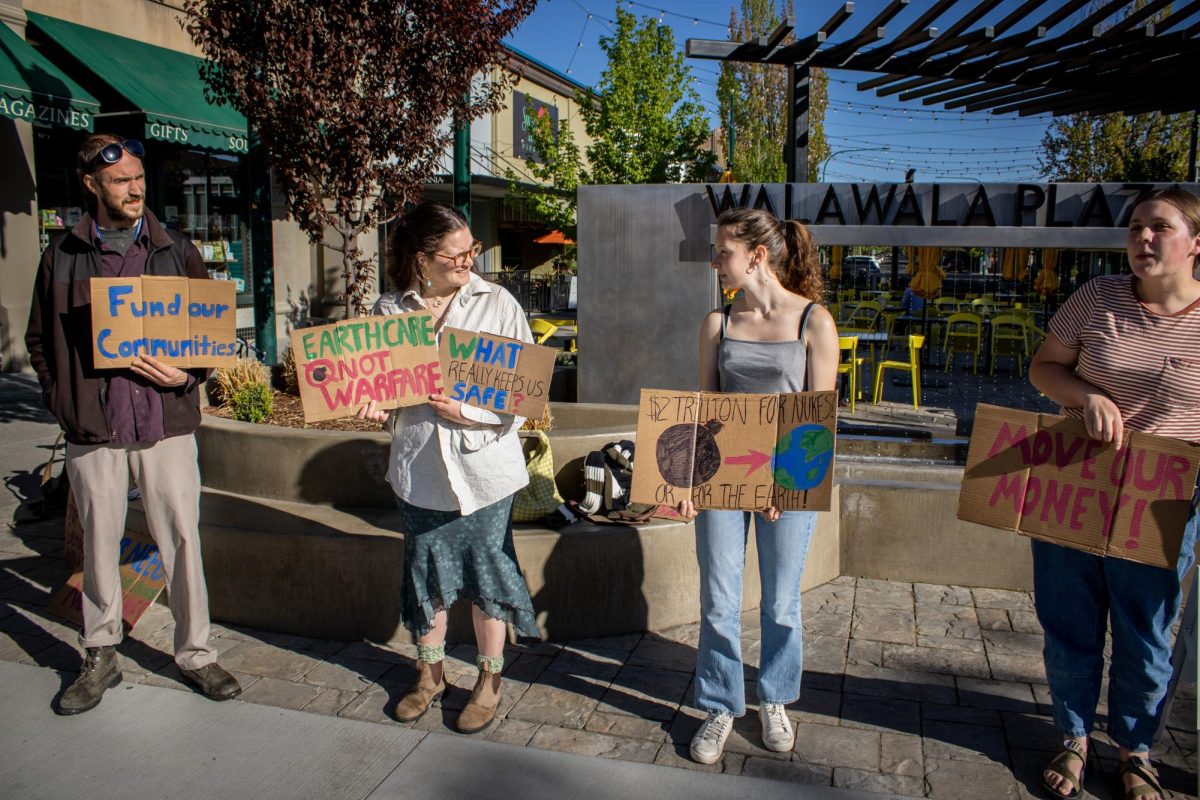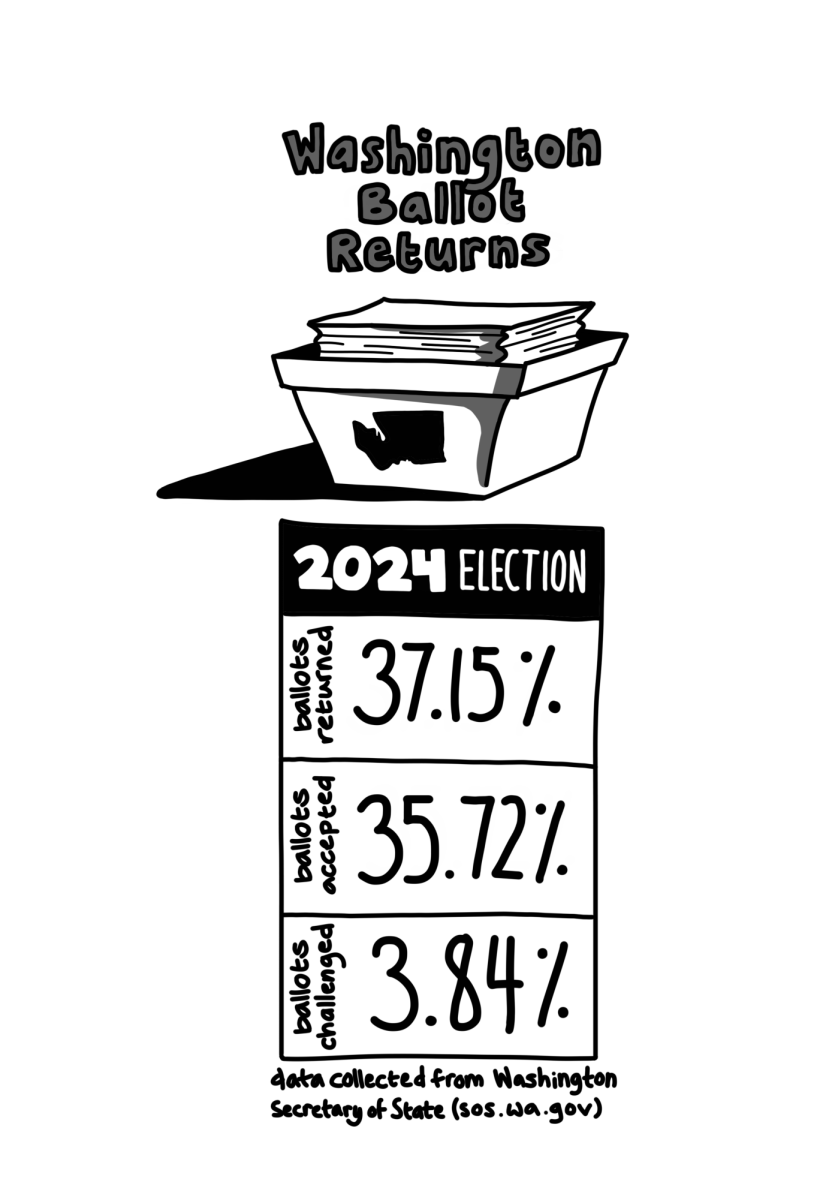Despite the slight chill and ominous clouds, many people gathered on Ankeny in order to celebrate Earth Day in an event held by Campus Greens. The day started with service projects and finished with festivities held on Ankeny. The event featured the Eighth Arm of Vishnu, root beer floats and tie-dying in the afternoon.
“We hoped to have more people at the service projects, but we had a pretty good turn-out and hopefully we’ll figure out a better way to get people to come out next year,” said Zoe Plakias, co-president of Campus Greens, of the approximately 70 volunteers.
“The service projects were about getting people out into Walla Walla and forming bonds with community members and each other,” said Campus Greens member Jesse Phillips.
 The service projects centered on stream restoration but varied in location and activity. Many members of Campus Greens felt the service projects were critical to show participants that they could do more than just talk about saving the earth, they could take action.
The service projects centered on stream restoration but varied in location and activity. Many members of Campus Greens felt the service projects were critical to show participants that they could do more than just talk about saving the earth, they could take action.
“Earth Day is supposed to be a celebration, not a time to feel guilty or get mad at other people,” said Plakias. “Too often people associate environmentalism strictly with activism and forget that it’s also about celebration.” Plakias hopes that the event will show other students how fun environmentalism can be and hopefully recruit some new members.
Earth Day is the largest secular modern-day celebration in the world. It was first organized in 1970 by Wisconsin Senator Gaylord Nelson and activist Denis Hays. They called for an Environmental Teach-in to be held on April 22 to demonstrate popular public support for an environmentalist agenda.
The U.S. Environmental Protection Agency characterized the years leading up to Earth Day as “a time when rivers caught fire and cities were hidden under dense clouds of smoke.” In 1962, Rachel Carson’s “Silent Spring” exposed the hazards of the pesticide DDT and helped set the stage for a new way of thinking about humanity’s effect on the environment. Environmental crises such as the Cuyahoga River of Ohio catching on fire and the 1969 Santa Barbara oil spill won the attention of the nation and focused it towards activism.
“Earth Day was in the middle of a great deal of anti-war protesting that left a lot of people bruised. When Earth Day came around, it wasn’t about being against something, it was about ‘working for a better relationship with Mother Earth,’ as funny as that sounds today,” said Environmental Humanities professor Don Snow.
Snow was a sophomore at Colorado State University when Earth Day “hit college campuses with a green fury.” Although conservationists such as John Muir and Gifford Pinchot had initiated the movement to protect public lands, the idea of being ‘green’ was an entirely new concept.
“Earth Day engendered the biggest set of changes in my lifetime,” said Snow. “The single greatest legacy of Earth Day is the National Environmental Policy Act (NEPA).”
NEPA requires federal agencies to consider the environmental impacts of their proposed actions. This gave birth to the Environmental Impact Statement (EIS). Not only does NEPA require agencies to thoroughly research their environmental impact, it also requires that the research results be made public. Today those laws are called “sunshine laws” as they “let light shine” on government processes.
The NEPA also made provisions for lawsuits. “It wasn’t just that now you knew about the environmental impact, but also that you could now act on it,” said Snow on the new regulations.
Since 1970, a lot of important regulation has been put into place. This includes regulation that we often take for granted to day such as the Clean Air Act, the Endangered Species Act and the Safe Drinking Water Act. Despite these new laws, many still think the movement has a long way to go.
“We need a new Earth Day with an issue to re-vitalize the movement,” said Snow. He believes that issue is climate change. Snow thinks that it is our generation that will have to confront flooding coastal cities, advancing deserts and shifts in food production, among other things.
Sociology and Environmental Studies Professor Kari Norgaard agrees. “Young people today have one of the greatest challenges but also one of the greatest opportunities to make change. I think Earth Day has the potential to explode,” said Norgaard.








